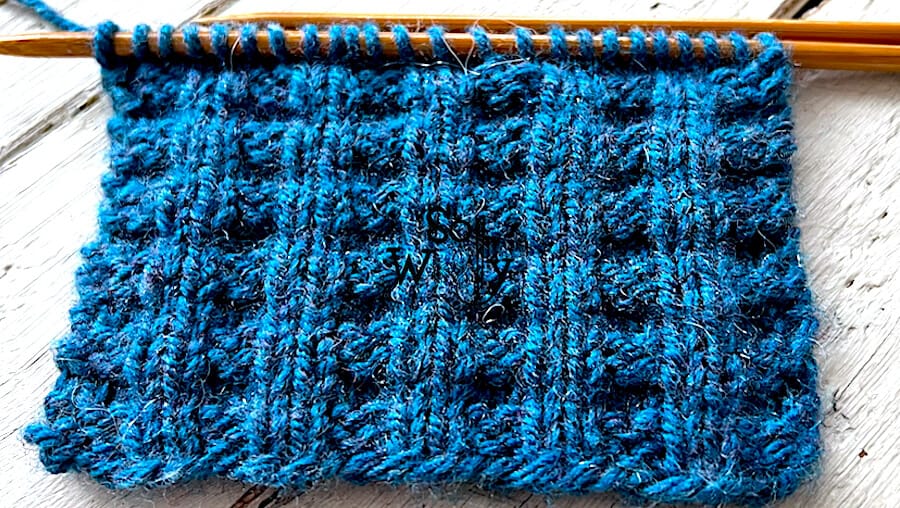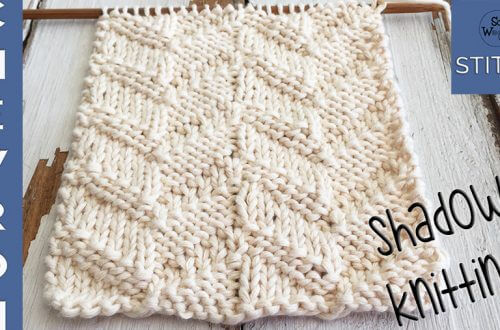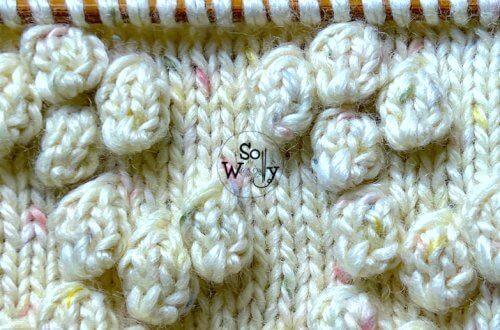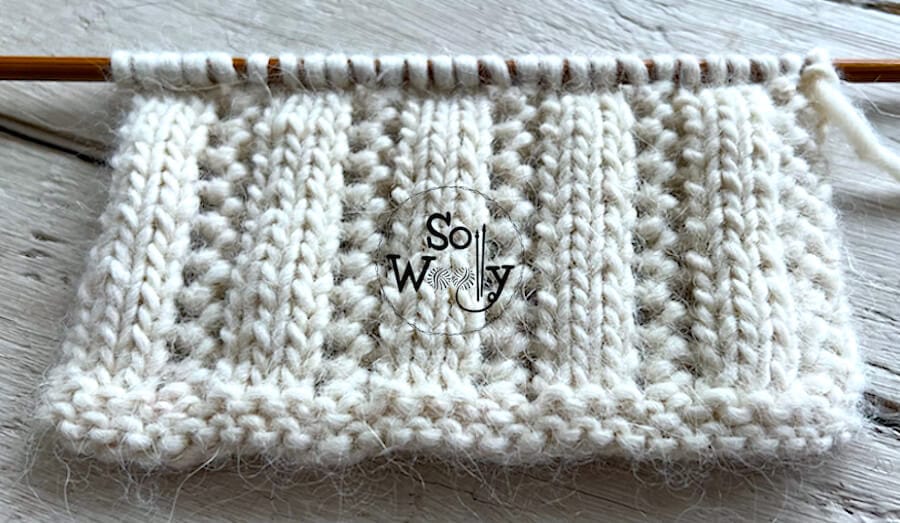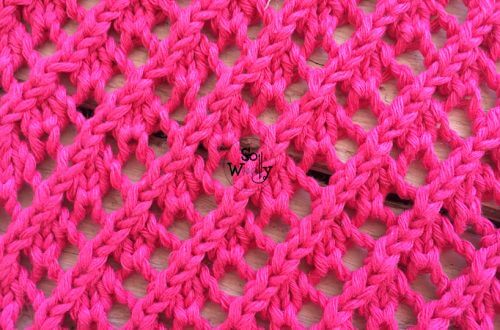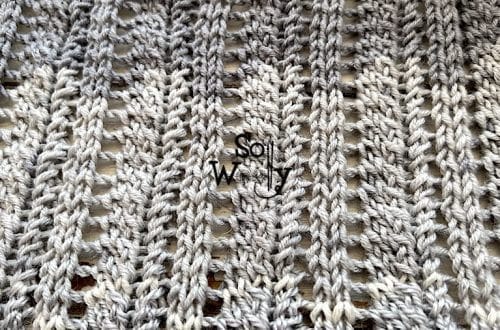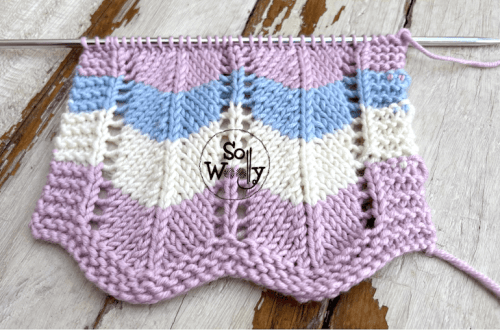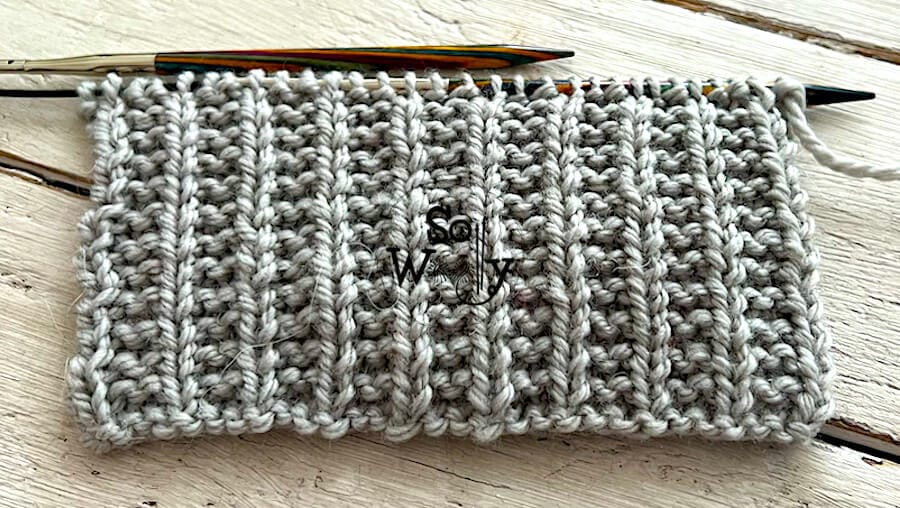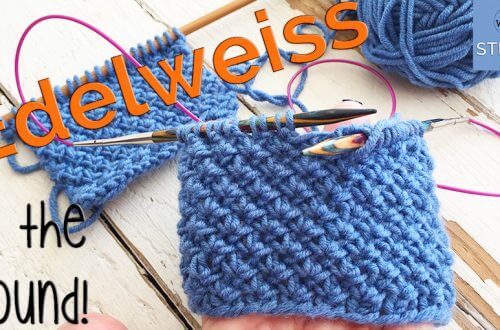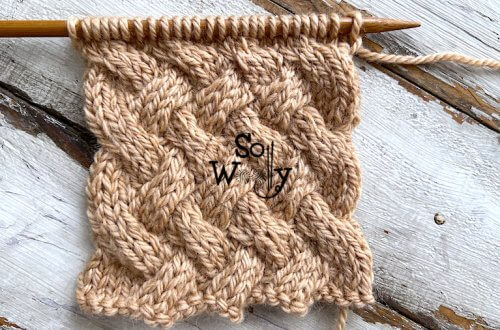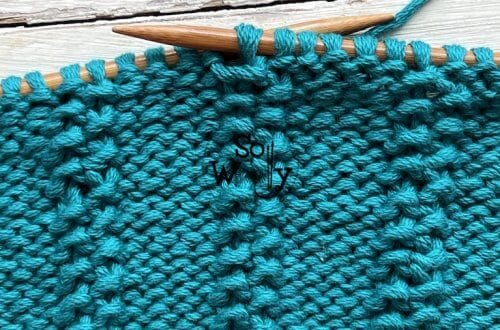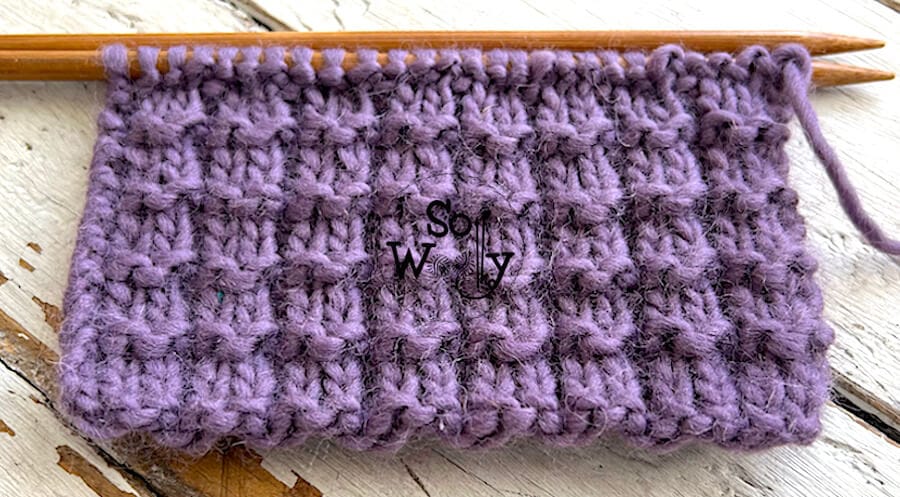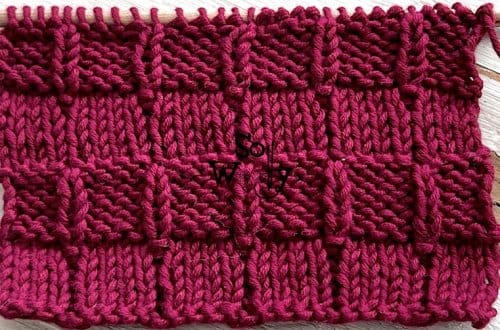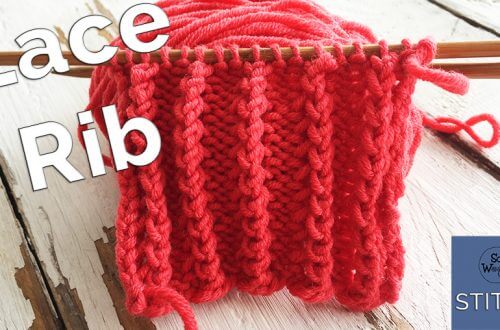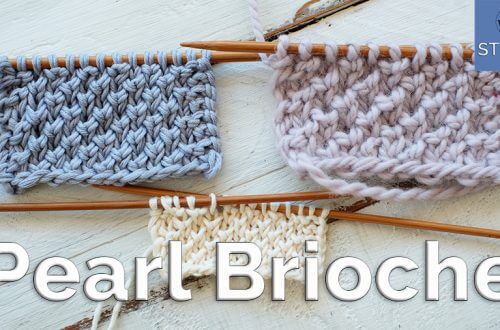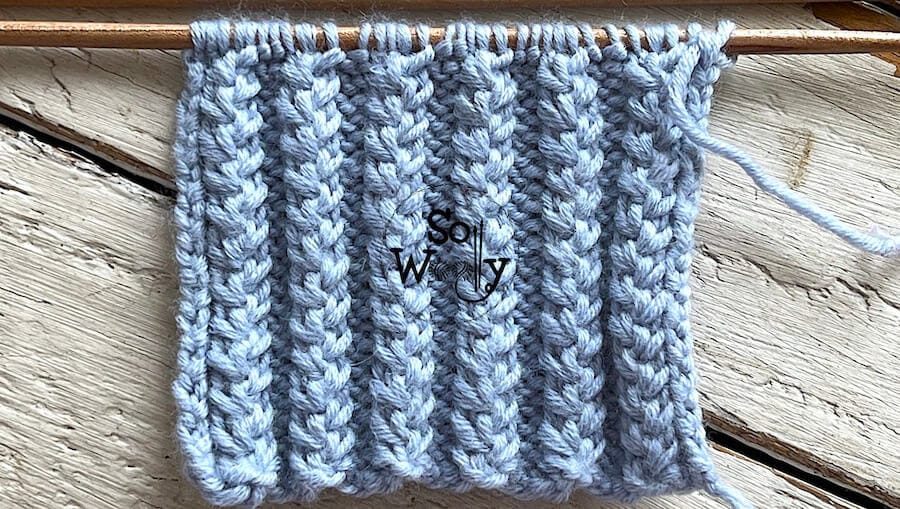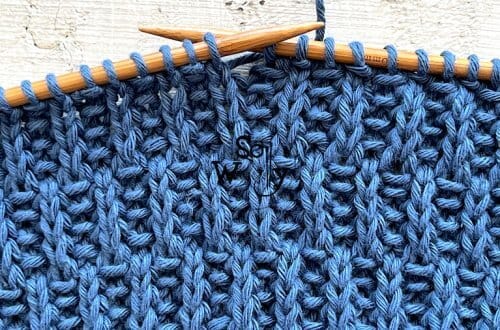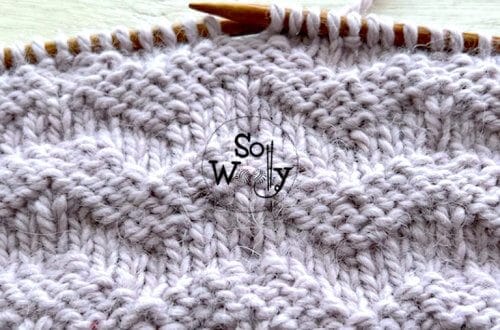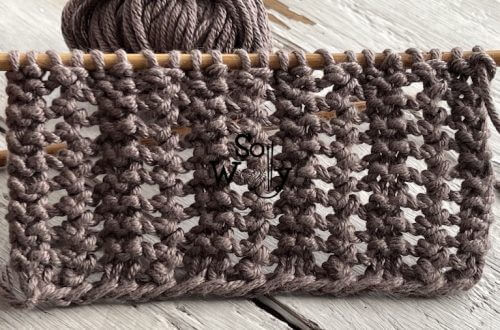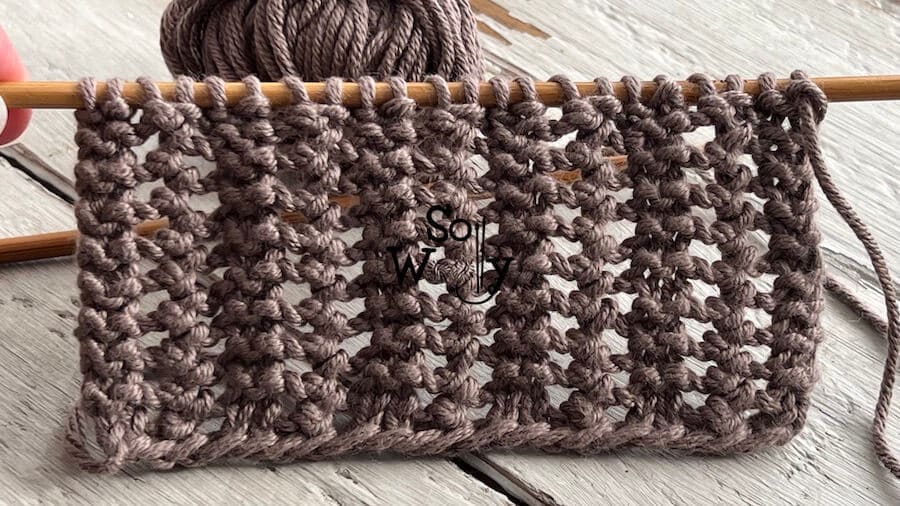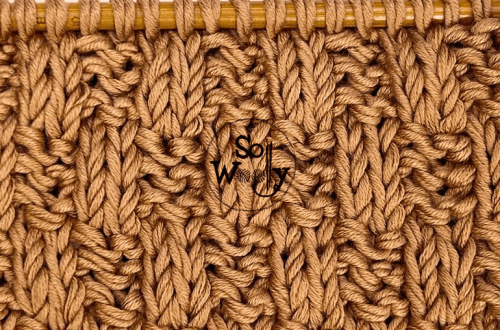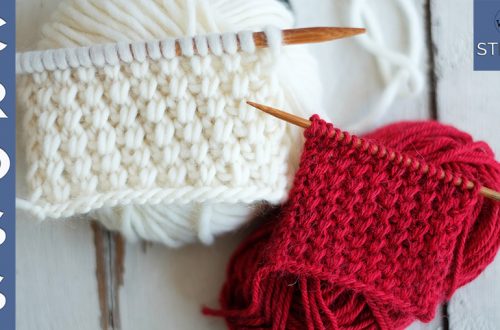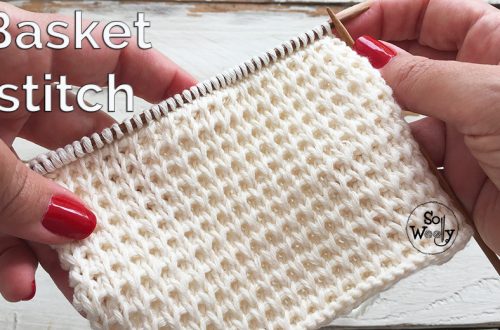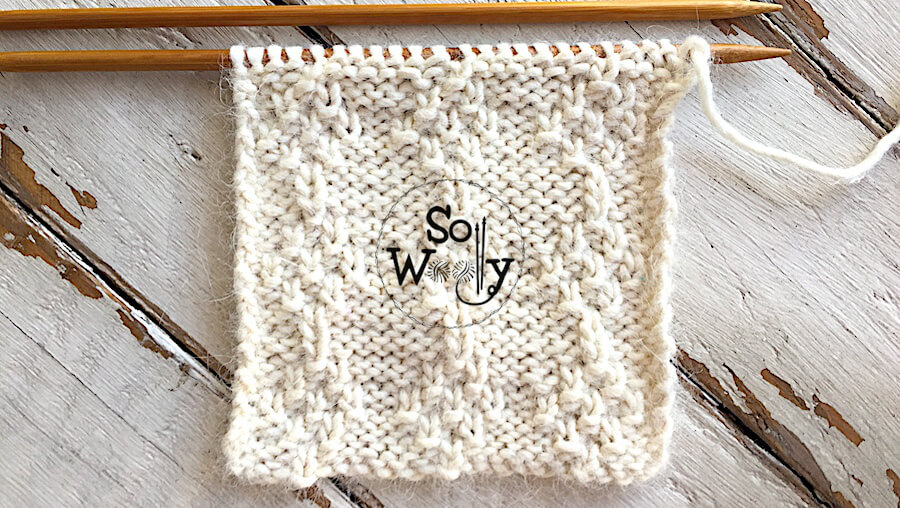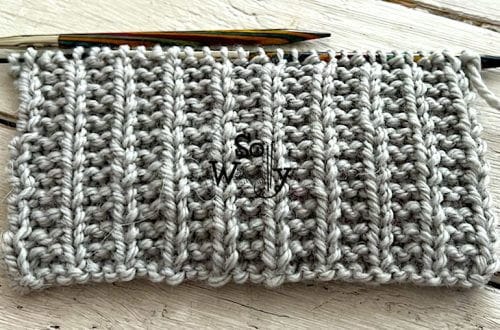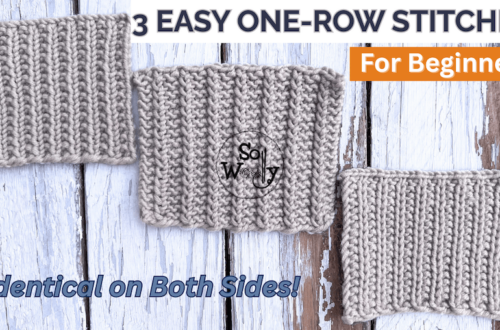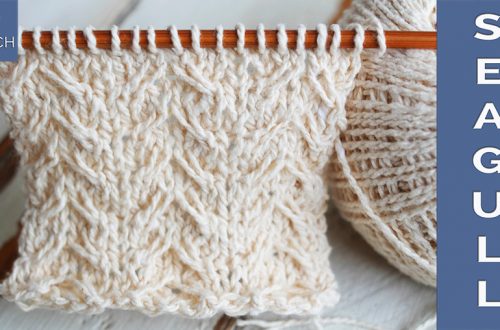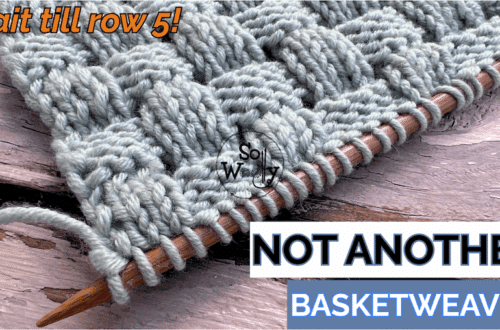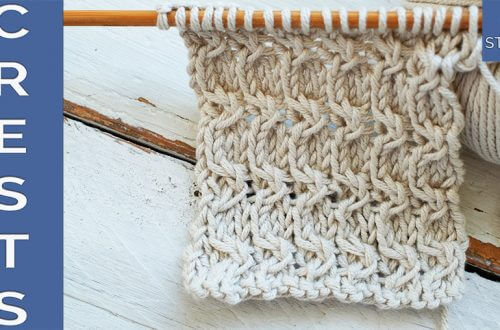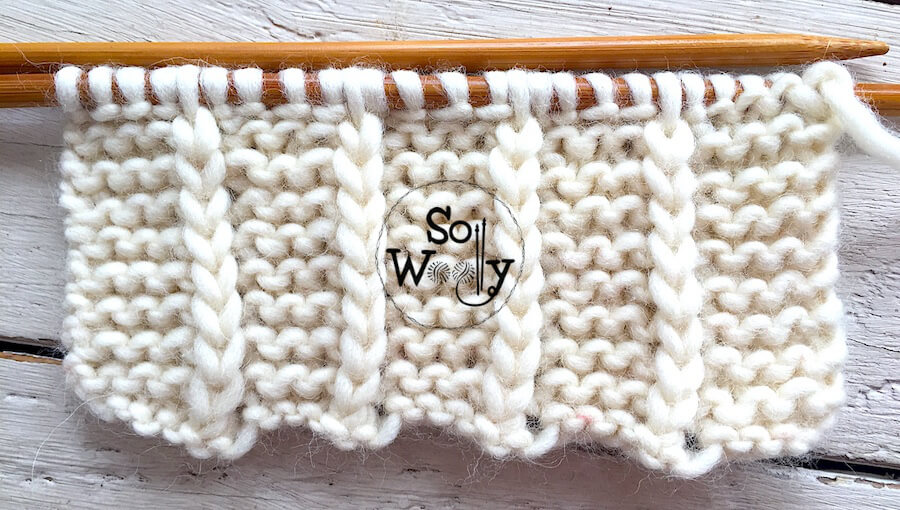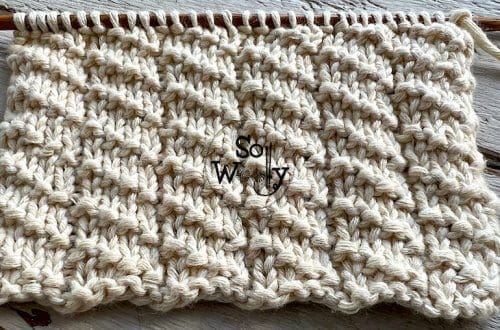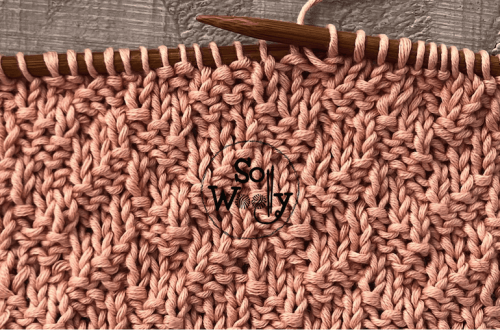-
How to knit the Thermal stitch: For veterans and absolute beginners!
In this post, I’m sharing how to knit the Thermal stitch, known also as “Interrupted Rib” (similar to the Pique stitch we practiced a couple of weeks ago). It’s a four-row repeat pattern, that’s totally beginner-friendly! Why? Well, there are some reasons: First of all, it’s simple to knit; the Thermal stitch combines knits and purls only. In fact, there are no increases, decreases, or crossing stitches involved… easy peasy. What’s more, two of the four rows are plain knit and purl rows! Secondly, although both sides are not identical, you can decide which one will be the “right side”, because the two of them look nice 😉 Honestly, I…
-
How to knit an easy Lace Column Scarf stitch pattern in two rows!
In today’s tutorial, you’ll learn how to knit an easy Lace Column Scarf stitch: It’s simply gorgeous! My swatch hasn’t been blocked yet and it looks adorable, so imagine it after a nice blocking process 🙂 It’s a two-row repeat knitting pattern, which includes a couple of steps that you’ll remember trouble-free. Although it’s not reversible, the lace columns look pretty also on the wrong side of the work… I’m loving it. And the techniques required are quite simple: knit and purl stitches, plus some yarn overs here and there. Finally, in the video tutorial, I’m sharing how to do it in both, English and Continental methods. So, no excuses!…
-
How to knit the Half Garter Rib stitch (two rows only!)
In this post, I’ll show you how to knit the Half Garter Rib stitch; another great pattern for beginners (if you can knit and purl, you can do it!). One of the reasons why this pattern is so easy to do (and to memorize) is that it involves two rows only, one of which is a plain knit row. Could not be easier! Moreover, it’s a reversible pattern; although both sides aren’t identical, the other side of the work has also an interesting texture to it, you’ll see. Similar to the Mock Rib Stitch, the Half Garter Rib stitch doesn’t roll up, so it will work for a wide range…
-
How to knit the Pique Rib stitch: Great for beginners
In this tutorial, you’ll learn how to knit the Pique Rib stitch; super easy to do, ideal for beginners (it combines simple knit and purl stitches). It’s a reversible four-row repeat pattern (although both sides are different, they look pretty); the so-called “wrong side of the work” looks like a “Broken Rib stitch. Two of the four rows are identical, and one of them is a plain knit row, so if you are just starting to knit, this one is for you! Furthermore, the Pique Rib stitch stays flat, so it’s perfect for accessories such as scarves, cowls, wraps, etc., but also for larger pieces, such as blankets, sweaters, or…
-
How to knit the Double Braided Rib stitch
In today’s post, you’ll learn how to knit the adorable Double Braided Rib stitch, step by step. It’s a reversible two-row repeat pattern; although not identical on both sides. Additionally, it doesn’t roll up, so it’s a nice option when knitting scarves or infinite cowls, or any other kind of rectangular garment. However, I’m sure it will give an elegant touch to the cuffs of sweaters, hats, and socks. Similar to the Mock Cable Ribbing stitch, we practiced a while ago, the Double Braided Rib features a double-cross that resembles a braid. So, grab your needles and a little bit of yarn, and let’s get busy 🙂 Abbreviations CO: Cast…
-
How to knit the One-row repeat stitch: Reversible (it doesn’t curl)
In this tutorial, you’ll learn how to knit a one-row repeat lace knit stitch, in both, English and Continental styles. It’s a reversible knit stitch pattern, identical on both sides, although, to me, the even rows form the “Right” side of the work. Additionally, this one-row lace knit stitch doesn’t curl, because of the combination of knit and purl stitches; similar to the Herringbone Lace stitch we practiced a while ago. Apart from being pretty easy to do (there are no twists nor any especially difficult steps), you can use it for both Summer and Winter garments, in other words, cotton or wool, it’s up to you 🙂 Nevertheless, before…
-
How to knit a Super Easy One-Row Repeat pattern
Today, I’m sharing a super easy one-row repeat knitting pattern, perfect for a lot of projects, such as scarves, blankies, infinite cowls, wraps, or throws…you name it! Why? First and foremost, it lays flat; it doesn’t roll up or bend on any side, so it’s not necessary to add an edge. It’s a reversible pattern, almost identical on both sides. Furthermore, it’s a vertical pattern, great for long garments; it forms both, embossed columns of “v” and pleats, for a slim and elegant design. In addition, it’s an easy-peasy one-row repeat pattern. It’s made of plain knit + purl stitches (no increases nor decreases are needed). Finally, in the video…
-
How to knit the Raised Diamonds stitch pattern
In this post, I’m sharing how to knit the Raised Diamonds stitch pattern, using knit and purl stitches only. In fact, there are no twists, no decreases, nor increases! Yep 😉 Lately, we’ve been practicing several patterns which create rich textures by working stitches through the back loop, or right/left crossing stitches. So, today, I wanted to show you how to build larger solid shapes with a combination of plain knit and purl stitches only. The Raised Diamonds stitch pattern has some advantages to it: First of all, it’s super easy to knit. Every two rows, we work what we see (knit the knits and purl the purls); furthermore, some…
-
How to knit the Twisted Rib stitch (English and Continental style)
In this tutorial, you’ll learn how to knit the Twisted Rib stitch, an interesting version of the 2 x 2 Rib. In my humble opinion, all these different versions of the classic rib stitches are so useful. They add a nice touch to your knitting work. However, this one is not quite as stretchy as some other rib styles. This is why I’d use it as a main stitch for a whole garment, such as a scarf or an infinite cowl, rather than cuffs in general. In fact, its design creates small cables, a vertical pattern that will stand out in a large piece. On the other hand, the Twisted Rib…
-
Easy two-row repeat knit stitch, for scarves and blankets
Today, I’m sharing a lovely two-row repeat knit stitch, great for scarves, blankies, and infinite cowls. Its design creates embossed columns, with crispy and gorgeous vertical lines. Not only is it easy to make and memorize, its also reversible (not identical on both sides, but the other side of the work looks gorgeous too). Additionally, this two-row repeat pattern stays flat all the time, so there’s no need to think about edges 😉 If you’re starting to knit, my suggestion is to get sharp tip needles. This will make everything easier; the sharp tip helps to get two stitches together, and to purl a stitch through the back loop! Believe…
